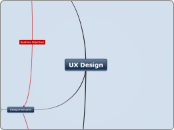How to Read a Paper
ABSTRACT
Researchers spend a great deal of time reading research papers. However, this skill is rarely taught, leading to much wasted effort. This article outlines a practical and efficient three-pass method for reading research papers.
INTRODUCTION
Researchers must read papers for several reasons: to review them for a conference or a class, to keep current in theit field. or for a literature survey of a new field. For many years I have used a simple approach to efficiently read papers. This paper describes the three-pass' approach and its use in doing a literature survey
Three-Pass Method
Literature Survey
The three-pass approach to conducting a literature survey Involves using an academic search engine like Google Scholar or CiteSeer to find recent papers in the area of interest. Here's a summary of the steps involved
A REQUEST
I would like to make this a living document, updating it
as I receive comments. Please take a moment to email me
any comments or suggestions for improvement. You can also
add comments at CCRo, the online edition of CCR
Experience
For 15 years, the author has utilized the three-pass approach across tasks like reading conference proceedings, writing reviews, and conducting background research.
Related work
the importance of seeking additional resources when engaging in specific academic tasks. For paper reviewing:
Timothy Roscoe’s paper on “Writing reviews for systems conferences
Henning Schulzrinne’s comprehensive website
George Whitesides’s excellent overview of the process
Simon Peyton Jones’s website covering the entire spectrum of research skills
ACKNOWLEDGMENTS
Acknowledgments to Hossein Falaki, Earl Oliver, and Sumair Ur Rahman for their initial contribution to the document. Also, appreciation for the insightful comments from Christophe Diot and the meticulous copyediting by Nicole Keshav. This work was supported by grants from the National Science and Engineering Council of Canada, the Canada Research Chair Program, Nortel Networks, Microsoft, Intel Corporation, and Sprint Corporation.
REFERENCES
[1] S. Peyton Jones, “Research Skills,”
http://research.microsoft.com/ simonpj/Papers/givinga-talk/giving-a-talk.htm.
[2] T. Roscoe, “Writing Reviews for Systems
Conferences,”
http://people.inf.ethz.ch/troscoe/pubs/reviewwriting.pdf.
[3] H. Schulzrinne, “Writing Technical Articles,”
http://www.cs.columbia.edu/ hgs/etc/writingstyle.html.
[4] G.M. Whitesides, “Whitesides’ Group: Writing a
Paper,”
http://www.che.iitm.ac.in/misc/dd/writepaper.pdf.
[5] ACM SIGCOMM Computer Communication Review
Online, http://www.sigcomm.org/ccr/drupal/.
REFERENCES [1] S. Peyton Jones, “Research Skills,” http://research.microsoft.com/ simonpj/Papers/givinga-talk/giving-a-talk.htm. [2] T. Roscoe, “Writing Reviews for Systems Conferences,” http://people.inf.ethz.ch/troscoe/pubs/reviewwriting.pdf. [3] H. Schulzrinne, “Writing Technical Articles,” http://www.cs.columbia.edu/ hgs/etc/writingstyle.html.
[4] G.M. Whitesides, “Whitesides’ Group: Writing a Paper,” http://www.che.iitm.ac.in/misc/dd/writepaper.pdf. [5] ACM SIGCOMM Computer Communication Review Online, http://www.sigcomm.org/ccr/drupal/.
instead of starting at the beginning and plowing your way to the end. Each pass accomplishes specific goals and builds upon the previous pass: The first pass gives you a general idea about the paper. The second pass lets you grasp the paper’s content, but not its details. The third pass helps you understand the paper in depth.
THIRD PASS
- Virtual Re-implementation
- Identify Assumptions and Hidden Failings
- Note Ideas for Future Work
SECOND PASS
- Greater Care, Ignore Details like Proofs
- Focus on Figures, Diagrams, and Illustrations
- Mark Relevant Unread References
FIRST PASS
Title, Abstract, Introduction
Section and Sub-section Headings
- Conclusions
- Answer 5 Cs:
- Category
- Context
- Correctness
- Contributions
- Clarity









